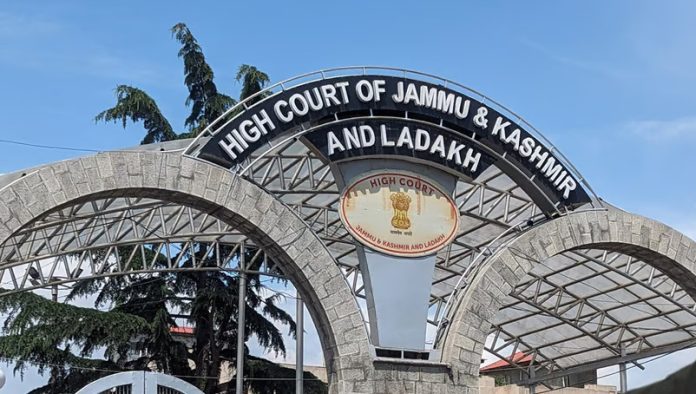Ram Prasanna Sharma, J
1. This appeal is directed against the judgment of conviction and order of sentence dated 6-3-2012 passed by the Sessions Judge Rajnandgaon,
Sessions Division Rajnandgaon (CG) in Sessions Trial No. 7 of 2010 wherein the said Court convicted the appellant for the commission of offence
under Sections 457, 307 of IPC for attempting to murder of Sonkuwar and Bhuneshwar and 307 of IPC for attempting to murder of Pingla Bai and
sentenced him to undergo rigorous imprisonment for three years and to pay fine of Rs.1000/-, RI for ten years and to pay fine of Rs.10,000/- and RI
for ten years and to pay fine of Rs.20,000/-, with default stipulations. All the sentences are directed to run concurrently.
2. In the present case, names of the victims are Sonkuwar, Bai, Bhuneshwar and Pingla Bai. As per version of the prosecution, appellant got married
to victim Pingla Bai in the year 2006 and thereafter she left her matrimonial house and lodged criminal case for cruelty against the appellant and all
other family members of the appellant. On the date of incident i.e., 1-5-2009 when Pingla Bai along-with her parents was in their house, appellant
entered into the house and assaulted the parents of Pingla Bai by rod and also assaulted his wife Pingla Bai by knife as a result of which they
sustained severe injuries on their bodies. The matter was reported to the Police Station and after completion of investigation charge sheet was filed,
the appellant did not plead guilty and the trial was conducted. After completion of trial, the trial Court convicted and sentenced the appellant as
aforementioned.
3. Learned counsel for the appellant submits as under:
I) Looking to the injuries sustained by the victims, it could not be said that there was intention of the appellant to cause death of the victims, therefore,
case will not fall under Section 307 of IPC.
II) Prosecution has failed to bring essential ingredients to constitute the offence under Section 457 of IPC, therefore, conviction is contrary to the fact
and legal aspect of the matter.
Iii) Prosecution failed to bring seizure of weapon as the seizure memo does not contain the signature of the appellant which is very much necessary to
prove that such weapon has been seized at the instance of the appellant.
iv) Knife and rod are recovered from open place after lapse of time from the date of incident which itself creates doubt about using of the weapon by
the appellant,therefore, finding of the trial Court is liable to be set aside.
4. On the other hand, learned counsel for the State submits that the finding recorded by the trial Court is based on proper marshaling of evidence and
the same is not required to be interfered while invoking the jurisdiction of the appeal.
5. I have heard learned counsel for the parties and perused the material available in the record.
6. PW/5 Sonkuwar Bai deposed that time of incident is 8.30 p.m., at night when she was at home at village Sikaari, Mahka along with her husband
Bhuneshwar and daughter namely Pingla Bai. At the same time, she heard voice of abusing and when she turned to place suddenly appellant
assaulted her by rod on her forehead and again he assaulted her by knife. When her daughter reached there, appellant tried to inflict injury on her by
knife and when her daughter Pingla Bay intervened appellant inflicted two knife injuries on her abdominal and at the same time Pingla Bai fell down.
She cried to her husband for help and when her husband namely Bhuneshwar reached to the spot, appellant also assaulted him by rod and knife.
Version of this witness is supported by version of Pingla Sinha (PW/9) who is victim of the incident and again it is supported by version of
Bhuneshwar (PW/13) who is another victim of the incident. Version of these three victims is again supported by version of Ramlal (PW/1), Sevak
Das (PW/3), Hariram (PW/6), Gulshan Kumar (PW/7), Sahdev (PW/8) and Hori Prasad (PW/16) who reached to the spot and found blood in the
house of the victim and again found oozing of blood from the bodies of three victims. All the witnesses have been subjected to searching cross
examination, but nothing could be elicited in favour of defence and version of all the witnesses is unshaken.
7. The incident took place on 1-5-2009 and report was lodged on the same day at Police Station Chhuriya naming the appellant as culprit and his act of
inflicting the injuries by rod and knife to all the three victims is also mentioned in the said report. Version of direct evidence is supported by version of
Dr. Anil Mahakalkar (PW/18) who examined victim Bhuneshwar on 2-5-2009 at District Hospital, Rajnandgaon and noticed the following injuries as
per Ex.P/16
i) Stitched lacerated wound irregular margin over left parietal region in the size of 7 cm with bleeding.
ii) Stitched incised wound over right chin with irregular margin in the size of 1 ½ cm.
Iii) Dressed incised wound over left side chest in the size of 4 x 1/10 cm.
He opined that the injuries were caused by sharp cutting object and hard and blunt object. He further examined the victim Pingla Sinha on the same
day and noticed the following injuries as per Ex.P/17.
i) Stitched incised wound over right costal margin just above 3 cm active bleeding.
ii) Stitched incised wound over right lumber region in the size of 3 cm.
Iii) Stitched incised wound over left thigh lateral in the size of 2 cm.
iv) Stitched lacerated wound dorsal spine in the size of 2 cm.
v) Stitched lacerated wound over right hand in the size of 3 cm.
vi) Stitched incised wound over left FA in the size of 2 cm.
Vii) Stitched incised wound over left thigh in the size of 1 cm.
Viii) Stitched incised wound over right arm in the size of 3cm.
ix) Incised wound over left side back in the size of 2 x ½ cm
x) Incised wound over left back in th size of 1x ½ cm.
He deposed that condition of the patient was serious in nature.
He further examined the victim Sonkuwar Bai on the same day and noticed the following injuries as per Ex.P/18.
i) Incised wound over parietal region in the size of 1 ½ cm stitched.
ii) Incised wound over left chin in the size of 1 cm stitched.
Iii) Stitched incised wound over right hand in the size of 2 cm.
iv) Deformity swelling over right FA in the size of 6 x 3 cm.
8. Looking to the direct and medical evidence which is supported by FIR lodged on the same day naming the appellant, this court has no reason that
the appellant has been falsely roped in charge in question. Evidence of all the witnesses is quite natural and inspires confidence which is supported by
medical evidence.
9. Now the point for determination is whether the act committed by both the appellants constitute offence under Section 307 of IPC.
10. An attempt is an intended, but unfinished crime, tending but failing to effect its commission. Specific intention to commit the crime of murder is a
necessary prerequisite of this section. In so far as the offence relates to an attempt, the overt act must necessarily be left unaccomplished because
otherwise the prosecution would be for the completed crime. Apart from the necessary mens rea, actus reus must be more than a preliminary
preparation. The attempt must have gone so far that it would result in the commission of the crime intended unless frustrate by the intervention of
extraneous circumstances, independent of the will of the accused. So, in order to constitute an offence under this section, it must be established that
the offender did an act (the actus reus) and that act was actuated by an intention (the mens rea) to go further and to achieve a definite end, which is a
specific crime, namely, murder. The prosecution has to establish both the elements of the crime by proving that the accused did something, which, in
point of law, would be an intention of the commission of an offence and in taking that step, he was inspired by an intention to achieve the definite
objective which constituted the particular crime.
11. To constitute an offence under Section 307 IPC, two ingredients of the offence must be present:
(a) an intention of or knowledge relating to commission of murder: and
(b) the doing of an act towards it.
The essential ingredients required to be proved in the case of an offence under Section 307 IPC are:
(i) That the death of a human being was attempted;
(ii) That such death was attempted to be caused by, or in consequence of the act of the accused;
(iii) That such act was done with the intention of causing death; or that it was done with the intention of causing such bodily injury as; (a) the accused
knew to be likely to cause death; or (b) was sufficient in the ordinary course of nature to cause death, or that the accused attempted to cause death by
doing an act known to him to be so imminently dangerous that it must in all probability cause (a) death, or (b) such bodily injury as is likely to cause
death, the accused having no excuse for incurring the risk of causing such death or injury.
(iv) To justify conviction under this section it is not essential that bodily injury capable of causing death should have been inflicted.
12. In the present case, the appellant brutally assaulted all the three victims by iron rod and knife and looking to their injuries, it can be inferred that if
proper treatment would not have been given to victims in time, they would have succumbed to those injuries. It means, it can be inferred that the
appellant has done everything within his power to eliminate all the victims, but final result alludes because of proper treatment in time. Argument on
behalf of the appellant is not sustainable. In view of this Court, the act of the appellant falls within mischief of Section 307 of the IPC and the appellant
also committed lurking trespass at night in the house of the victim and assaulted them, therefore, the act of the appellant also falls within mischief of
Section 457 of the IPC. This court has no reason to record a contrary finding. Conviction of the appellant is hereby affirmed.
13. Heard on the point of sentence.
Offence under Section 307 IPC is punishable with imprisonment for life. The trial Court awarded rigorous imprisonment for ten years which cannot be
termed as harsh, unreasonable or disproportionate. Sentence part is also not liable to be interfered.
14. Accordingly, the appeal being devoid of merits is liable to be and is hereby dismissed. The appellant is reported to be in jail, therefore, no further
arrest for his arrest etc., is required.

